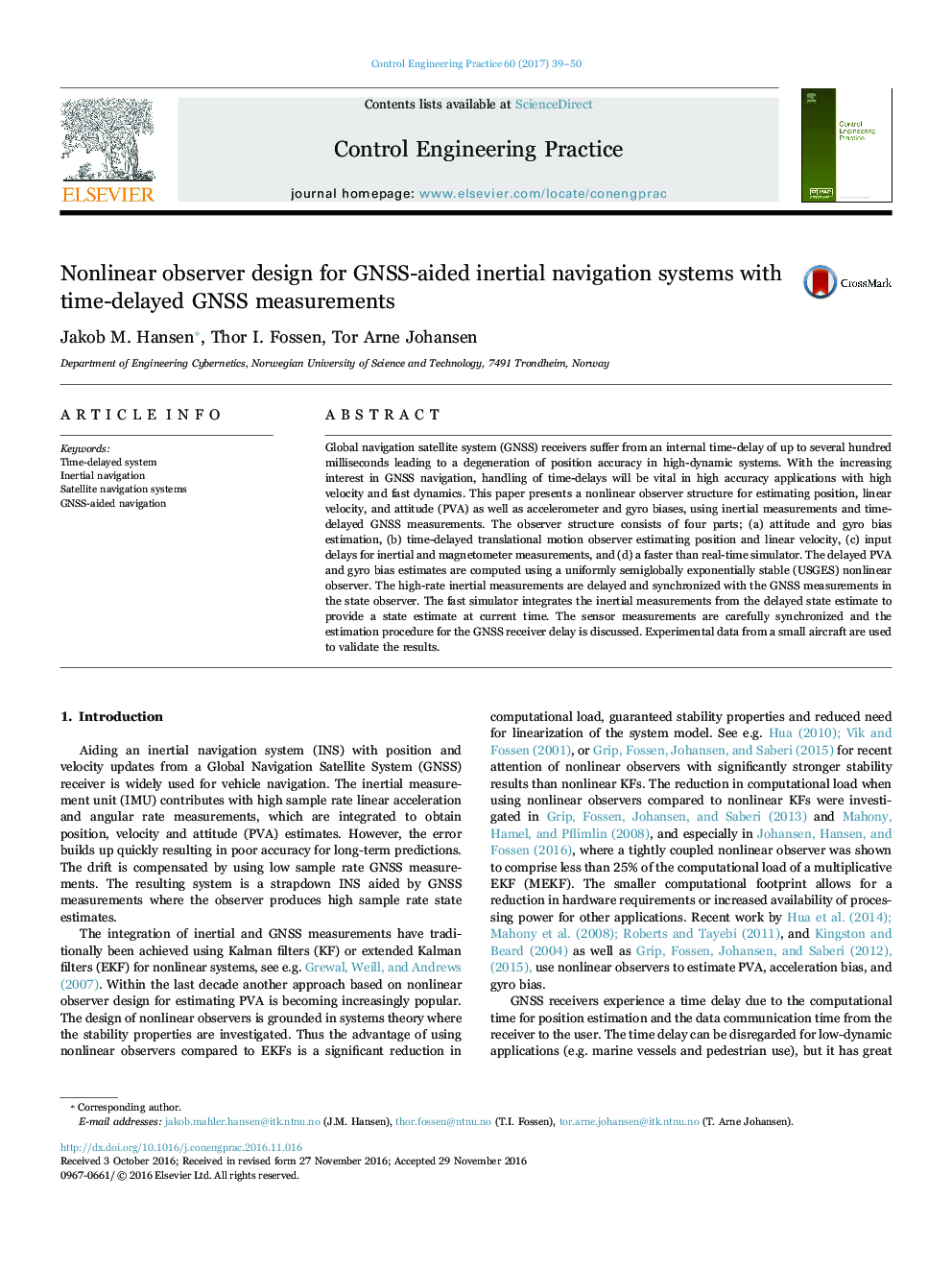| Article ID | Journal | Published Year | Pages | File Type |
|---|---|---|---|---|
| 5000395 | Control Engineering Practice | 2017 | 12 Pages |
Abstract
Global navigation satellite system (GNSS) receivers suffer from an internal time-delay of up to several hundred milliseconds leading to a degeneration of position accuracy in high-dynamic systems. With the increasing interest in GNSS navigation, handling of time-delays will be vital in high accuracy applications with high velocity and fast dynamics. This paper presents a nonlinear observer structure for estimating position, linear velocity, and attitude (PVA) as well as accelerometer and gyro biases, using inertial measurements and time-delayed GNSS measurements. The observer structure consists of four parts; (a) attitude and gyro bias estimation, (b) time-delayed translational motion observer estimating position and linear velocity, (c) input delays for inertial and magnetometer measurements, and (d) a faster than real-time simulator. The delayed PVA and gyro bias estimates are computed using a uniformly semiglobally exponentially stable (USGES) nonlinear observer. The high-rate inertial measurements are delayed and synchronized with the GNSS measurements in the state observer. The fast simulator integrates the inertial measurements from the delayed state estimate to provide a state estimate at current time. The sensor measurements are carefully synchronized and the estimation procedure for the GNSS receiver delay is discussed. Experimental data from a small aircraft are used to validate the results.
Related Topics
Physical Sciences and Engineering
Engineering
Aerospace Engineering
Authors
Jakob M. Hansen, Thor I. Fossen, Tor Arne Johansen,
